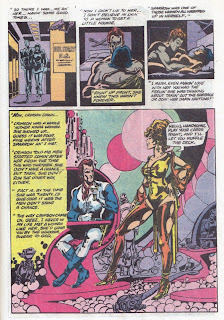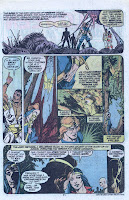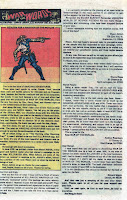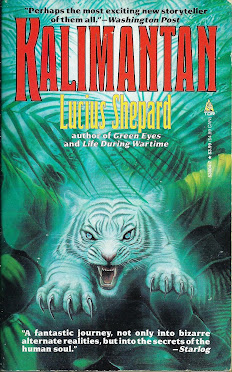Alan Davis (script and art) and Mark Farmer (inks)
Marvel graphic novel, 2007
'Killraven' compiles all six issues of the miniseries first published by Marvel comics from November, 2002 to April 2003.
Alan Davis (b. 1956) started out as a comic book artist in the UK, before becoming one of the best-known artists for DC and Marvel based on his work for those companies from the mid- 80s up through the 2000s.
In his Introduction to this compilation, Davis recalls seeing issue 18 of Amazing Adventures, which in the Spring of 1973 debuted the Killraven character, and being impressed with the character and the artwork from Neal Adams.
In 2002, Marvel editor Bob Harras offered Davis the chance to write and illustrate a Marvel series; Davis ultimately chose to do Killraven.
The 2002 miniseries is basically a retelling of the Killraven storyline, and features characters and plot points that will be quite familiar to those who have read the series back in the 70s.
In my opinion, while competently done, Davis's Killraven really doesn't succeed as a re-imagining of the character and the setting.
The artwork is decent enough, although stylistically it is very much inspired by the artwork used in Marvel's mainstream superhero titles of the early 2000s. There's nothing about the 2002 Killraven that identifies it as a sf, rather than a superhero, comic.
I can't say I'm overly enthused by Davis's use of tilted panels in an effort to lend additional dynamism to his action sequences. Those action sequences rendered in this manner seem too cramped and too overfilled with speech balloons to be very effective in a visual sense.
Davis's plot is reasonably interesting through the first five issues, although the preachy nature of Killraven's 'Quest for Peace' gets wearying after a while. Unfortunately, Davis introduces some plot elements in the sixth and final issue that are contrived, ending this miniseries on an unconvincing note.
Summing up, if you're a die-hard Killraven fan and you want to have every incarnation of the character in your collection, then you'll want to pick up either the original issues or this graphic novel. All others can probably pass.


















































































